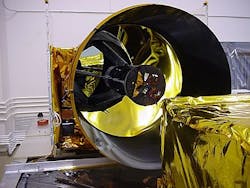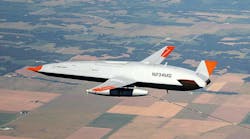DULLES, Va., 26 Aug. 2012. Satellite designers at Orbital Sciences Corp. in Dulles, Va., needed Global Positioning System (GPS) receivers for the Ice, Cloud, and land Elevation Satellite-2 (ICESat-2) spacecraft, which is scheduled for launch in 2016. They found their solution from RUAG Space AB in Vienna, Austria.
RUAG Space will supply two space-hardened GPS receivers to Orbital Sciences for NASA's ICESat-2 Earth observation mission to measure Earth's polar ice sheets. For Vienna-based RUAG Space, this contract represents a milestone in its expansion into the U.S. space market.
Scientists want to measure changes in the ice sheets covering Greenland and the Antarctic to assess the global effects of climate change. The first U.S. satellite devoted to this task, ICESat-1, was taken out of service in February 2010 after seven years in operation.
| Related stories -- Fibertek/Sigma Space team win laser system support contract for ICESat-II -- Ball Aerospace and Boeing team up for NOAA bid -- Ball Aerospace assembles NPP satellite. |
ICESat-2 will be equipped with an advanced multi-beam laser altimeter system that is more powerful than that of ICESat-1. This improved precision laser-ranging technique will provide measurements of ice sheet thickness and help produce high-resolution maps.
RUAG's GPS receivers will help the spacecraft keep precise track of its position. Since ICESat-2 will be orbiting at the relatively low altitude of 310 miles above the Earth's surface, it can use navigation signals transmitted by GPS satellites.
RUAG will design lightweight GPS receivers that comply with requirements for reliability and resistance to radiation for deployment in space. These devices can process signals received in two different frequency bands simultaneously for accurate positioning, which enables onboard instruments to provide data accuracy to less than two meters.
For more information contact RUAG Space online at www.ruag.com, Orbital Sciences at www.orbital.com, or the NASA ICESat-2 program at http://icesat.gsfc.nasa.gov/icesat2.
Follow Military & Aerospace Electronics and Avionics Intelligence news updates on Twitter



